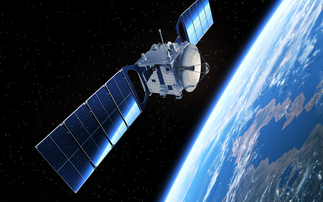Brands have a powerful field of influence on sustainability, and digital packaging innovation offers a chance to lead by example, according to Jose 'Pepe' Gorbea from HP Graphic Arts
It's fair to say that most of us wanted to have superpowers when we were children. From invisibility, to breathing underwater, flying or immense strength, we looked to emulate the heroes of our comic books, cartoons or movies.
My children are going through that magical time now, and one thing that struck me recently, when watching a Marvel re-run, was the strong morality and sense of purpose behind these figures. The incredible powers come with in immense responsibility.
The same can be said of the world's businesses. We too have the power - but also the responsibility - to effect change.
Not only do the majority of consumers (51 per cent) want to buy more sustainably, but 68 per cent of them say that they rely on brands to act as leaders in delivering positive social and environmental outcomes in wider society. That's a huge remit. But crucially, brands are realising that packaging is a key area where they can make a difference - evaluating how it is produced, used and disposed of, but also, as a platform to communicate directly with customers and drive positive behaviour change.
The packaging problem
The challenge is one primarily of production and waste. Carbon output in manufacturing processes is disturbing the delicate equilibrium of the planet's ecosystem, and collectively we need to cut 65 per cent of global emissions this decade if we are to avert climate catastrophe. Meanwhile, packaging waste is polluting our coastlines, clogging waterways and, according to the World Economic Forum, costing the global economy a staggering $120bn every year.
But packaging is necessary. It remains an important part of how we safely and hygienically transport products around the globe. But we can - and must - do more to reduce the impact that this has on the planet. It's not just a challenge for the supply chain, it's an issue for the entire value chain, and it's an issue that touches almost every sector.
Digital at the forefront of delivering sustainable innovation
Digital printing uses technology to transform the outdated and clunky process of analogue printed packaging. By digitising the process, it removes cumbersome stages, dramatically improving speed to market and removing the need for minimum order quantities.
The secret to cutting packaging waste is that with a faster print-run, you only produce what you need, without creating unnecessary excess. And digital print unlocks both efficiencies in cost and time. It can vary by brand, but a typical example would see analogue printing cycles of six to eight weeks reduced to one to two weeks, simply because you don't need to calibrate or produce much of the physical materials (plates and cylinders) used in the printing of packaging.
That is really powerful when it comes to building a more sustainable future for packaging. Digital printing:
- reduces supply chain waste by up to 26 per cent
- and cuts the process' carbon footprint by anywhere between 65-80 per cent
And it does this while allowing you to print on sustainable, water-based and/or compostable inks, and on sustainable, biodegradable, organic and compostable materials.
Packaging as a platform to drive positive behaviour change
Brands have the opportunity to go beyond efficiencies and use digital printed packaging to strengthen consumer engagement and drive sustainable behaviour change, all while accelerating sales.
Brand marketers may sometimes feel disconnected from the sustainability dialogue within business, but together with sustainability and supply chain leaders, they have the ability to influence massive internal and external change, showing how packaging innovation can be good for planet, people and profit. Take Hershey's for example, with #HerShe. The famous confectionary company used digital print to create a truly creative and engaging marketing campaign to celebrate women and encourage an important gender conversation - all while digitally printing its packaging in a more sustainable way and reducing the business' impact on the environment.
Sustainability and brands' role in tackling the biggest challenges we face is truly all encompassing. It involves every facet of a business. And packaging is where many of these leaders can come together to drive real change and impact.
Brands have a powerful voice and field of influence and by leading by example on digital packaging innovation, they can not only reduce their impact on the environment, but be heroes of change and inspire others to take positive action as well.
Jose 'Pepe' Gorbea is global head of brands, agencies and sustainability innovation at HP Graphic Arts.
This article was sponsored by HP Graphic Arts.
- Join HP Graphic Arts at the WARC webinar - Unpacking creative effectiveness' best kept secret - on Wednesday 28 July (2:00PM BST; 9:00AM EST; 18:00PM PST), to hear how brands from all over the world are using digitally printed packaging to drive sustainable impact and growth through creative campaigns.






